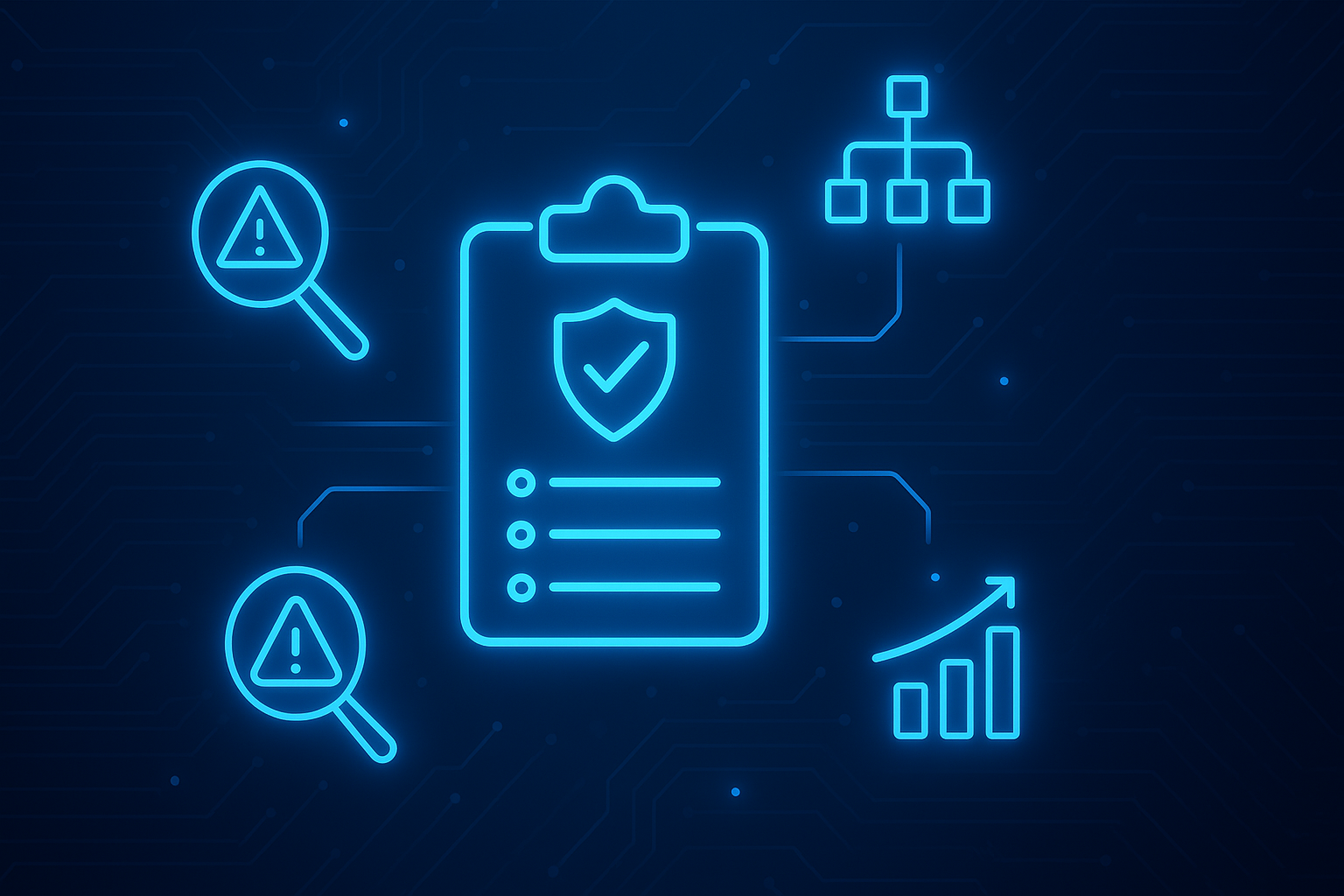In today's cybersecurity landscape, organizations must not only defend against and detect threats but also have robust plans to recover from security incidents. The NIST Cybersecurity Framework (CSF) recognizes this necessity through its final core function: Recover. This comprehensive guide explores how organizations can effectively implement the Recover function to minimize downtime and maintain business continuity after cybersecurity events.
NIST CSF Recover Function: Definition and Purpose
According to the National Institute of Standards and Technology (NIST), the Recover function is defined as developing and implementing "appropriate activities to maintain plans for resilience and to restore any capabilities or services that were impaired due to a cybersecurity event." This function serves a critical purpose - supporting timely recovery to normal operations while reducing the impact of cybersecurity incidents.
The Recover function represents the final component of the NIST CSF's five core functions (Identify, Protect, Detect, Respond, and Recover), completing the cybersecurity lifecycle by ensuring organizations can return to normal operations following a security incident.
The Three Critical Categories of the Recover Function
The NIST CSF structures the Recover function into three essential categories, each addressing different aspects of cybersecurity recovery:
1. Recovery Planning (RC.RP)
Recovery Planning focuses on establishing and maintaining recovery processes and procedures to restore systems and assets affected by cybersecurity incidents. Key subcategories include:
- RC.RP-1: Recovery plans are executed during or after cybersecurity incidents
- Implementation guidance: Organizations should develop documented recovery procedures that are regularly tested, updated, and integrated with broader business continuity plans
- Effectiveness metrics: Recovery time objectives (RTOs), recovery point objectives (RPOs), and successful execution of recovery plan tests
Recovery planning transforms theoretical incident response into practical, actionable steps that minimize downtime and data loss. Organizations with mature recovery planning capabilities can often reduce incident recovery times by 60-70% compared to those without formal plans.
2. Improvements (RC.IM)
The Improvements category ensures that recovery planning and processes incorporate lessons learned from previous cybersecurity events. Key subcategories include:
- RC.IM-1: Recovery plans incorporate lessons learned
- RC.IM-2: Recovery strategies are updated to reflect evolving threats and organizational changes
- Implementation approach: Establish formal post-incident review processes that capture insights and translate them into specific improvements to recovery capabilities
Organizations implementing continuous improvement processes for their recovery function typically experience a 40-50% reduction in repeat incidents and faster recovery times for similar events over time.
3. Communications (RC.CO)
The Communications category addresses the coordination of restoration activities with internal and external stakeholders. Key subcategories include:
- RC.CO-1: Public relations are managed during and after incidents
- RC.CO-2: Reputation is repaired after an incident
- RC.CO-3: Recovery activities are communicated to internal and external stakeholders, including executive leadership teams
Effective communication during recovery is not merely about transparency—it directly impacts stakeholder confidence, regulatory compliance, and the organization's ability to maintain customer trust through challenging situations.
Explore the NIST CSF Function Detect here.
Why Effective Recovery Planning Is Business-Critical
The implementation of a robust recovery function delivers multiple organizational benefits:
- Minimized business impact: Organizations with mature recovery capabilities experience 30-40% less financial impact from cybersecurity incidents
- Competitive advantage: Recovery handled with transparency and effectiveness can actually enhance customer trust, with studies showing that well-managed incident recovery can increase customer retention by up to 25%
- Regulatory compliance: Many industries face specific requirements regarding recovery capabilities and timeframes
- Operational resilience: Recovery planning strengthens overall organizational resilience beyond just cybersecurity incidents
Best Practices for Implementing the NIST CSF Recover Function
Develop Comprehensive Recovery Procedures
Effective recovery procedures should:
- Define clear roles and responsibilities during recovery operations
- Establish recovery time objectives (RTOs) and recovery point objectives (RPOs) for critical systems
- Include detailed technical recovery procedures for different types of incidents
- Address both technical and business process recovery needs
Regularly Test Recovery Capabilities
Testing is essential for ensuring recovery plans work when needed:
- Conduct tabletop exercises to verify procedural understanding
- Perform technical recovery tests in isolated environments
- Practice full business continuity exercises for critical systems
- Document test outcomes and improvement opportunities
Establish Clear Communication Protocols
Communication is often overlooked but critical to successful recovery:
- Develop templates for different stakeholder communications
- Define escalation paths and approval processes for external communications
- Prepare messaging that addresses regulatory notification requirements
- Train spokespersons on effective crisis communication
Implement Continuous Improvement Processes
The most resilient organizations continuously enhance their recovery capabilities:
- Conduct thorough post-incident reviews within 1-2 weeks of recovery
- Document specific, actionable improvement items with assigned owners
- Update recovery documentation to reflect new threats and organizational changes
- Measure and track recovery performance metrics over time
How CyberStrong Platform Enhances NIST CSF Recovery Implementation
CyberStrong provides organizations with powerful tools to streamline and optimize their NIST CSF Recovery function implementation:
- Integrated recovery planning: CyberStrong's platform enables organizations to develop, manage, and update recovery plans directly within the same system used for other cybersecurity framework components
- Recovery metrics dashboard: Real-time visibility into recovery readiness and performance metrics
- Gap analysis tools: Identification of specific recovery capability gaps with recommended remediation actions
- Cross-framework mapping: CyberStrong automatically maps NIST CSF Recovery requirements to other relevant frameworks (such as ISO 27001, HIPAA, and GDPR), eliminating duplicate efforts
- Automated testing schedules: Configurable testing reminders and documentation capabilities
- Improvement tracking: Systematic tracking of recovery-related improvements and their implementation status
Plan Your Cybersecurity Recovery
In today's threat landscape, cybersecurity incidents are increasingly viewed as inevitable. The differentiating factor between organizations is not whether they will face an incident, but how effectively they recover. Organizations that excel at the NIST CSF Recovery function demonstrate resilience that protects business value, maintains stakeholder trust, and ensures continued operations.
By implementing the NIST CSF Recovery function's key categories—Recovery Planning, Improvements, and Communications—organizations build the foundation for resilient operations that can withstand and rapidly recover from cybersecurity incidents.
CyberStrong's integrated platform approach streamlines NIST CSF implementation, providing the visibility, metrics, and management capabilities needed to transform recovery from a theoretical capability into a practical business advantage.
For more information on how CyberStrong can enhance your organization's implementation of the NIST CSF Recovery function or other cybersecurity frameworks, contact our team of security experts today.





.png)
.png)
.png)
%201.png)
.png)




